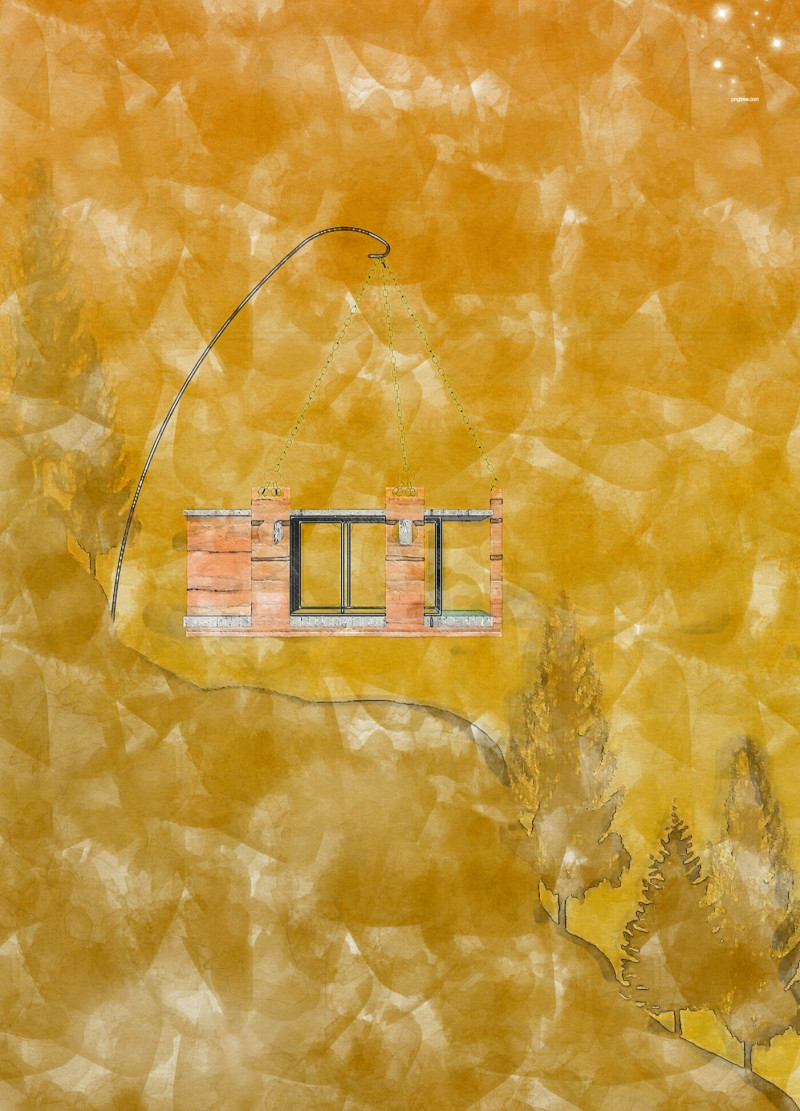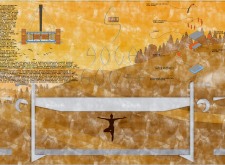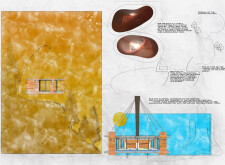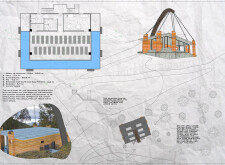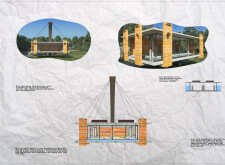5 key facts about this project
The facility spans a generous interior area, primarily centered around a large yoga practice space characterized by expansive glass façades that enhance the connection between indoor and outdoor environments. Surrounding this central area are essential support spaces, including a hall, kitchenette, and restrooms, strategically positioned to facilitate easy access without interrupting the flow of the primary practice area.
Integration of Nature and Functionality
A significant aspect of this project is its architectural form, inspired by organic shapes found in nature. The structure features butaphoric columns that provide both support and visual interest, creating a sense of verticality that allows the building to harmonize with the landscape. These columns contain circular openings, which not only allow for daylighting and ventilation but also serve to visually connect the interior spaces with the external environment. The design eschews traditional rectangular forms, promoting a more fluid and dynamic user experience.
Moreover, the facility emphasizes natural materials, such as wood and concrete, juxtaposed with glass and metal accents. This selection enhances the building's ecological footprint while promoting a calming ambiance, integral to yoga practice. The warm wooden elements foster a sense of comfort, while concrete provides structural integrity, reflecting a balance between strength and serenity.
Innovative Sustainability Practices
The design incorporates various sustainable practices, placing emphasis on operational efficiency and environmental responsibility. Solar panels installed on the roof contribute to the facility's energy needs, aligning with the goals of reducing reliance on non-renewable resources. Furthermore, rainwater harvesting systems reinforce water conservation initiatives by providing resources for gardening and facility use, thus minimizing water waste.
This project also features large openings that facilitate natural ventilation, allowing for fresh air circulation throughout the space. These strategies not only improve indoor air quality but also reduce energy consumption for heating and cooling.
By prioritizing both environmental sustainability and user experience, the project sets itself apart from typical yoga facilities. Its unique approach in terms of design and ecological consciousness positions it as a relevant case study in contemporary architectural practices focused on wellness and nature integration.
Readers interested in exploring the architectural ideas behind this project are encouraged to review the architectural plans, sections, and design elements for a comprehensive understanding of its innovative features. Examining these materials will provide deeper insights into the relationship between architecture, functionality, and sustainable design principles inherent in this yoga facility.


